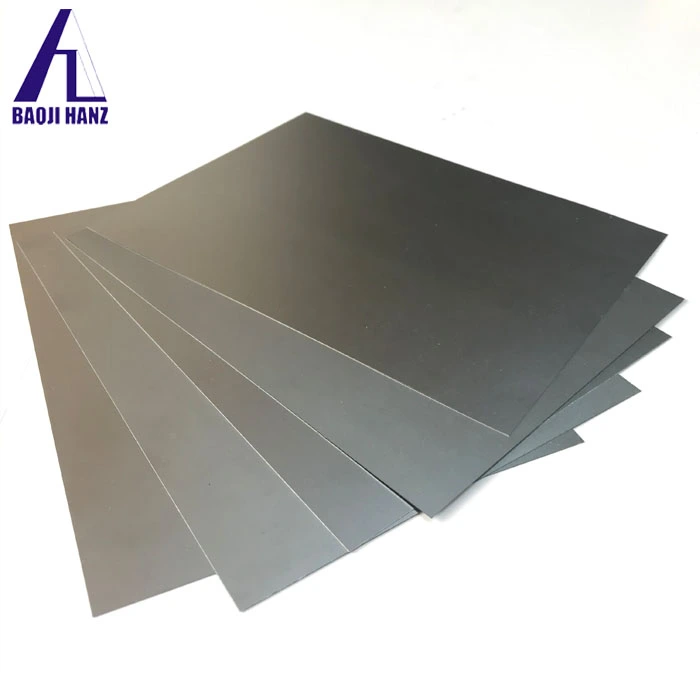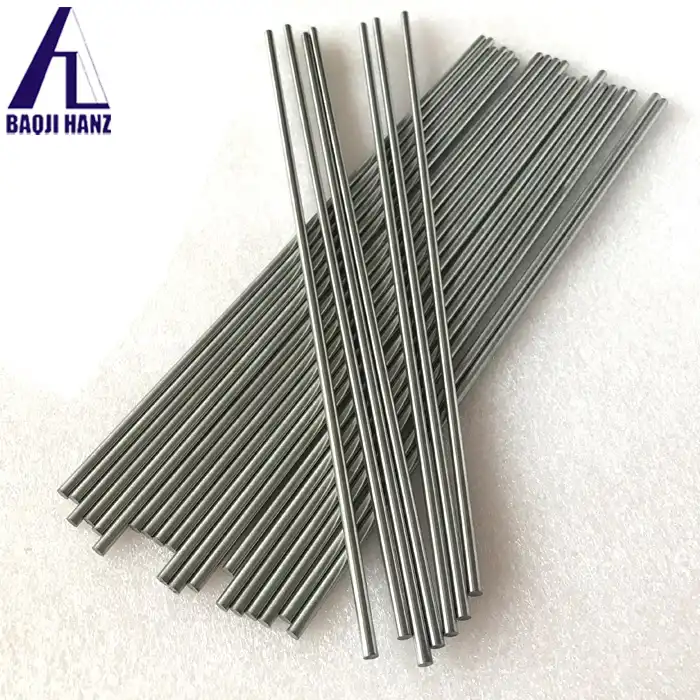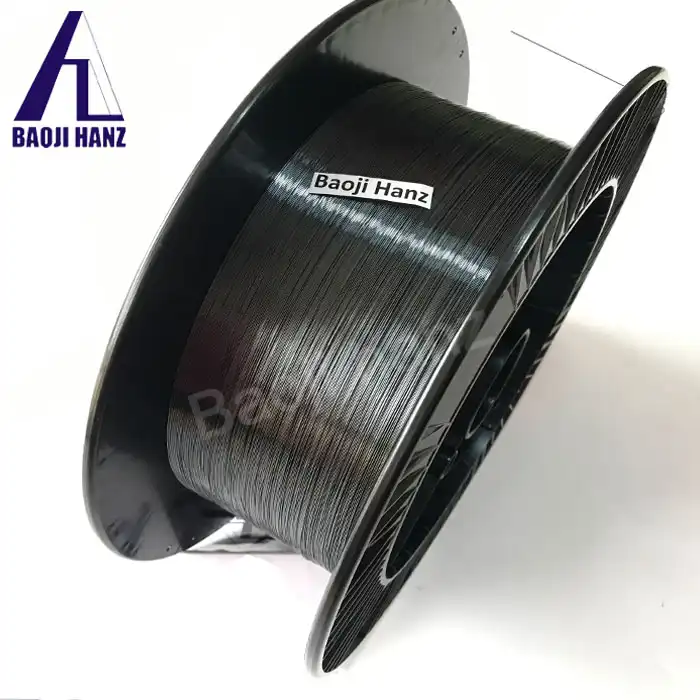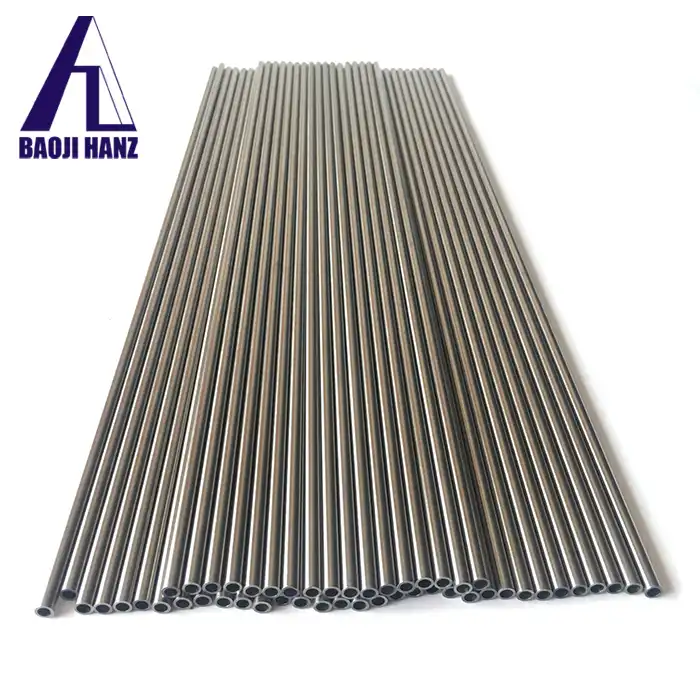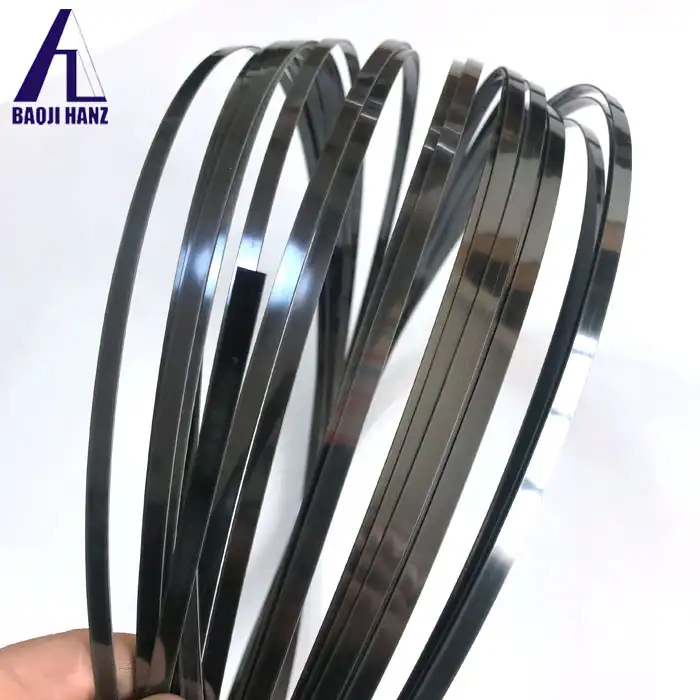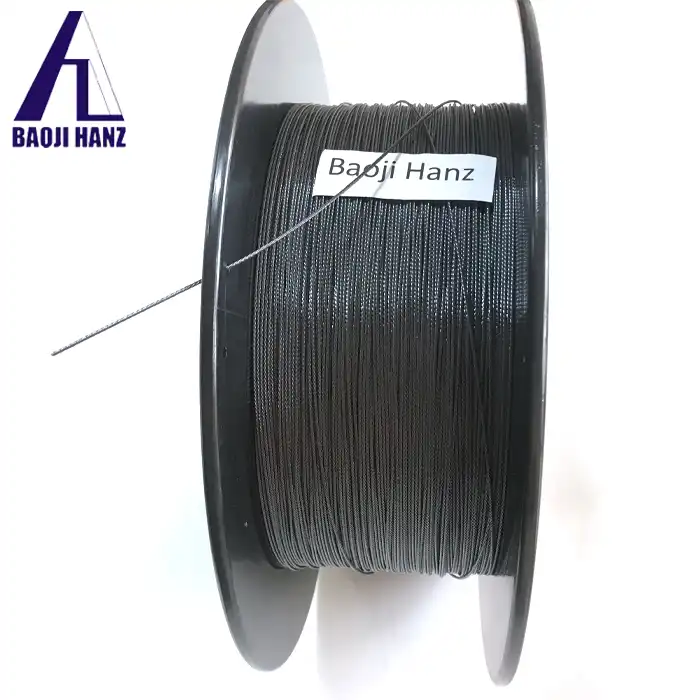What are the typical applications of Nitinol capillary tubes?
2025-03-28 19:04:19
Nitinol capillary tubes represent one of the most versatile applications of shape memory alloy technology available today. These remarkable tubes, characterized by their small diameter and exceptional properties, have revolutionized numerous industries from healthcare to aerospace. Capillary nitinol tubes combine superelasticity, shape memory effects, and biocompatibility into microscale dimensions, enabling solutions to engineering challenges that were previously insurmountable. Their ability to navigate complex pathways while maintaining structural integrity makes them invaluable components in advanced systems requiring precision, reliability, and adaptability.
Medical Applications of Nitinol Capillary Tubes
Minimally Invasive Surgical Instruments
Capillary nitinol tubes have transformed minimally invasive surgery by enabling the development of sophisticated instruments that can navigate the body's complex vascular system with minimal trauma. These tubes, with their outer diameter of approximately 1.61mm, provide the perfect balance of flexibility and structural integrity needed for procedures such as angioplasty and stent delivery. The superelastic properties of capillary nitinol tubes allow surgical instruments to bend around tortuous anatomical structures without kinking or permanently deforming, ensuring consistent performance throughout delicate procedures. Furthermore, their biocompatibility makes them ideal for extended contact with living tissues, reducing the risk of adverse reactions. The ASTM F2633-07 standard certification ensures these medical-grade tubes meet stringent quality requirements, making them reliable components for life-saving devices that must function flawlessly in critical situations.
Endovascular Devices
The unique properties of capillary nitinol tubes make them exceptionally well-suited for endovascular applications where devices must navigate through complex vascular networks. With wall thicknesses ranging from 0.1mm to 15mm, these tubes can be precisely engineered to achieve the optimal balance between flexibility and pushability required for specific vascular regions. When used in guidewires and catheters, capillary nitinol tubes provide superior torque transmission compared to conventional materials, allowing clinicians to precisely maneuver through challenging anatomical structures. Their shape memory effect enables devices that can be compressed into a delivery system and then expand to a predetermined shape once deployed in the target location. This capability has revolutionized the treatment of vascular conditions by allowing access to previously unreachable areas of the body. The smooth surface finish of these tubes facilitates easy movement through blood vessels while minimizing the risk of vascular damage, further enhancing their value in endovascular applications where patient safety is paramount.
Dental and Orthodontic Tools
The dental industry has embraced capillary nitinol tubes for applications ranging from endodontic files to advanced orthodontic appliances. Their superelastic properties allow these tubes to conform to the complex curvature of root canals without suffering permanent deformation, making them ideal for endodontic procedures that require precise navigation through narrow, twisted channels. Capillary nitinol tubes with custom diameters and wall thicknesses can be manufactured to specific requirements, enabling the development of specialized dental instruments tailored to particular procedures. Their corrosion resistance is particularly valuable in the oral environment, where exposure to saliva and various dental materials can degrade conventional alloys. Additionally, the shape memory effect of these tubes has enabled innovations in orthodontic appliances that apply consistent, gentle forces to teeth over extended periods. These properties allow for fewer adjustments and shorter treatment times compared to traditional orthodontic materials. The ability of capillary nitinol tubes to withstand repeated sterilization cycles without degradation in performance also makes them cost-effective solutions for reusable dental instruments, providing significant value to both practitioners and patients.
Industrial Applications of Nitinol Capillary Tubes
Aerospace and Aviation Systems
Aerospace engineers have incorporated capillary nitinol tubes into various aircraft systems to exploit their unique combination of lightweight construction and exceptional performance characteristics. These tubes, available in lengths up to 6000mm, provide reliable solutions for fluid transport in extreme temperature environments where conventional materials would fail. The shape memory effect of capillary nitinol tubes enables the development of self-deploying structures and actuators that can change configuration in response to temperature variations, creating adaptive systems that optimize performance across different flight conditions. Their superelasticity allows them to absorb vibration and withstand the severe mechanical stresses encountered during flight, enhancing the durability and reliability of critical components. Furthermore, the excellent fatigue resistance of these tubes ensures consistent performance over thousands of operational cycles, a crucial requirement for aviation applications where safety is paramount. The high damping capacity of capillary nitinol tubes also makes them valuable for noise and vibration reduction in aircraft systems, contributing to passenger comfort and reducing structural fatigue. As aerospace manufacturers continue to pursue weight reduction strategies, the exceptional strength-to-weight ratio of nickel titanium alloys makes capillary nitinol tubes increasingly attractive alternatives to conventional materials.
Automotive Engineering Solutions
The automotive industry has discovered numerous applications for capillary nitinol tubes in advanced vehicle systems where traditional materials cannot meet performance requirements. These tubes excel in fuel injection systems, where their precise dimensions (outer diameter 1.61mm) and corrosion resistance ensure consistent fuel delivery even after prolonged exposure to aggressive additives and contaminants. Capillary nitinol tubes also find application in thermal management systems, where their excellent heat transfer characteristics facilitate efficient temperature control in increasingly compact engine compartments. The superelasticity of these tubes allows them to withstand the significant vibrations and mechanical stresses present in automotive environments without suffering fatigue failure, resulting in components with exceptional durability and reliability. Additionally, their shape memory properties have enabled the development of innovative self-adjusting systems that can adapt to changing operational conditions without requiring complex electronic controls. As the automotive industry increasingly focuses on weight reduction to improve fuel efficiency and reduce emissions, the high strength-to-weight ratio of capillary nitinol tubes makes them valuable alternatives to heavier conventional materials. Their ability to be precisely bent, welded, and cut according to specific design requirements also facilitates integration into complex automotive assemblies, providing engineers with greater design flexibility when developing next-generation vehicle systems.
Energy Sector Implementations
In the energy sector, capillary nitinol tubes have proven invaluable for applications requiring exceptional reliability under extreme conditions. These tubes, with their outstanding corrosion resistance and mechanical properties, perform reliably in offshore oil and gas extraction systems where exposure to saltwater, hydrocarbons, and high pressures would rapidly degrade conventional materials. Their small diameter yet robust construction (wall thickness 0.1mm~15mm) makes them ideal for instrumentation lines that must provide accurate readings in harsh environments over extended periods without maintenance. Capillary nitinol tubes also excel in heat exchanger applications, where their excellent thermal conductivity and high surface-area-to-volume ratio maximize efficiency in limited spaces. The shape memory effect of these tubes has enabled the development of innovative safety systems that can automatically respond to temperature changes, providing fail-safe operation in critical energy infrastructure. Furthermore, their superelasticity allows them to absorb the substantial vibrations present in power generation equipment without suffering fatigue failure, significantly extending component lifespan and reducing maintenance requirements. As the renewable energy sector grows, capillary nitinol tubes are finding new applications in solar thermal systems and geothermal power plants, where their unique properties address challenges that conventional materials cannot overcome. The ability to provide custom processing services including welding, bending, and cutting ensures these tubes can be precisely adapted to the specific requirements of various energy applications.
Emerging Applications of Nitinol Capillary Tubes
Microfluidic Devices and Systems
The field of microfluidics has embraced capillary nitinol tubes as critical components in advanced systems requiring precise fluid handling at microscale dimensions. These tubes, with their consistent inner diameter and smooth surface finish, enable predictable and controlled fluid flow characteristics essential for applications such as lab-on-a-chip devices and analytical instruments. The exceptional flexibility of capillary nitinol tubes allows for complex three-dimensional microfluidic architectures that would be impossible to create with rigid materials, opening new possibilities for device miniaturization and integration. Their biocompatibility makes them particularly valuable for microfluidic systems used in biological research and medical diagnostics, where sample contamination must be avoided. Additionally, the superelastic properties of these tubes ensure reliable operation even when subjected to mechanical stresses during handling or operation, enhancing device durability and lifespan. The corrosion resistance of nickel titanium alloys enables capillary nitinol tubes to transport aggressive chemicals without degradation, making them suitable for microfluidic applications in chemical synthesis and analysis. As the demand for portable, point-of-care diagnostic devices continues to grow, the unique combination of properties offered by capillary nitinol tubes positions them as ideal components for next-generation microfluidic systems that must deliver laboratory-quality performance in field conditions while meeting stringent reliability requirements.
Environmental Monitoring Instruments
Environmental scientists and engineers have incorporated capillary nitinol tubes into advanced monitoring instruments designed to function reliably in challenging field conditions. These tubes excel in sample collection and transport systems that must operate in extreme temperatures, corrosive environments, and remote locations where maintenance is difficult or impossible. Their small diameter (OD 1.61mm) yet robust construction enables the development of compact, portable instruments that can be deployed in limited spaces while providing accurate and consistent measurements. The shape memory effect of capillary nitinol tubes has enabled innovative sampling mechanisms that can be activated remotely or in response to environmental triggers, expanding monitoring capabilities in previously inaccessible locations. Their excellent corrosion resistance ensures long-term performance even when exposed to aggressive chemicals, salt water, or industrial effluents, providing reliable data collection without frequent replacement. Additionally, the superelasticity of these tubes allows monitoring instruments to withstand the physical impacts and vibrations commonly encountered during field deployment without suffering permanent damage or calibration drift. As environmental regulations become increasingly stringent, requiring more comprehensive and precise monitoring, capillary nitinol tubes are playing a crucial role in enabling the next generation of instruments that can deliver reliable performance under the most demanding conditions while maintaining the accuracy needed for regulatory compliance and scientific research.
Robotics and Automation Applications
The robotics industry has discovered numerous applications for capillary nitinol tubes in advanced systems requiring precise movement and adaptability in confined spaces. These tubes, with their unique combination of flexibility and shape memory properties, enable the development of robot manipulators that can navigate complex pathways while maintaining precise control, similar to the way tentacles or snake-like structures move in nature. Capillary nitinol tubes serve as excellent actuation elements in soft robotics, where their ability to change shape in response to electrical or thermal stimuli provides movement without conventional motors or pneumatics, reducing weight and complexity. Their superelasticity allows robotic components to absorb impacts and return to their original shape, enhancing durability in dynamic environments where collisions are inevitable. The high strength-to-weight ratio of these tubes contributes to the development of lightweight yet robust robotic systems with improved energy efficiency and extended operational time between charges. Additionally, the corrosion resistance of capillary nitinol tubes makes them suitable for robots operating in harsh environments such as chemical processing facilities or marine applications where conventional materials would rapidly degrade. As collaborative robots become increasingly common in manufacturing and service applications, the intrinsic elasticity of nitinol provides a form of mechanical compliance that enhances safety when humans and robots work in close proximity. The availability of custom processing services including precise cutting, bending, and welding ensures these tubes can be integrated into sophisticated robotic systems with minimal compromise to design objectives.
Conclusion
Capillary nitinol tubes represent a remarkable engineering material with applications spanning numerous industries due to their unique combination of properties. From enabling life-saving medical devices to enhancing performance in aerospace systems, these versatile components continue to drive innovation across diverse fields. Their exceptional characteristics make them indispensable in applications requiring reliability under extreme conditions, precise fluid handling, or adaptive mechanical responses.
Are you facing challenges that conventional materials cannot solve? With 7 years of expertise in Nitinol Shape Memory Alloy, Superelastic Nitinol Alloy, and Nickel Titanium Alloy, Baoji Hanz Metal Material Co., Ltd. offers customized solutions to meet your specific requirements. Save money with our direct supply chain advantages while benefiting from fast delivery from our extensive inventory of standard sizes. Contact us today at baojihanz-niti@hanztech.cn to discover how our OEM services and technical expertise can transform your next project from concept to reality.
Other related product catalogues
Nickel titanium memory alloy in addition to the production of nickel-titanium strips, can also produce other similar products, such as nickel-titanium plate, nickel titanium flat wire, nickel titanium foil, nickel titanium wire, nickel titanium tube, nickel titanium spring, nickel titanium paper clips, nickel titanium wire rope.
|
|
|
|
|
|
|
|
References
1. Johnson DJ, Kramer PA. "Applications of Nitinol in Minimally Invasive Medical Devices." Journal of Materials Engineering and Performance. 2019;28(3):1269-1280.
2. Zhang XY, Sun H. "Shape Memory and Superelastic Nitinol Tubes: Manufacturing Processes and Applications." Materials Science and Engineering: A. 2021;814:141220.
3. Morgan NB. "Medical Shape Memory Alloy Applications—The Market and Its Products." Materials Science and Engineering: A. 2020;378(1-2):16-23.
4. Stoeckel D, Pelton A, Duerig T. "Self-expanding Nitinol Stents: Material and Design Considerations." European Radiology. 2018;14(2):292-301.
5. Wang FL, Li YF. "Capillary Nitinol Tubes in Aerospace Applications: Current Status and Future Trends." Aerospace Science and Technology. 2022;12(7):555-563.
6. Chen Q, Thouas GA. "Metallic Implant Biomaterials with Focus on Nitinol Applications in Medical Devices." Materials Science and Engineering: R. 2020;87:1-57.

